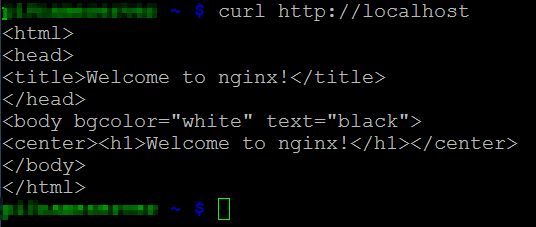Prerequisite
- privkey.pem file
- fullchain.pem file
Installing Postfix
Run the following commands:
sudo apt-get update
sudo apt-get install postfix
Configuring Postfix
- Run the following command:
sudo dpkg-reconfigure postfix
Configuration questions:
- Select OK to proceed.
- Choose Internet Site.
- System Mail Name: <EMAIL_DOMAIN>
- Other destinations for mail: <EMAIL_DOMAIN>, localhost.<EMAIL_DOMAIN>, localhost
- Force synchronous updates on mail queue?: No
- Local networks: 127.0.0.0/8 [::ffff:127.0.0.0]/104 [::1]/128
- Use procmail for local delivery?: No
- Mailbox size limit (bytes): 0
- Local address extension character: +
- Internet protocols to use: all
Feel free to answer the preceding questions based on your setup. Just replace the EMAIL_DOMAIN (i.e. example.com) with a valid value.
- Create the following folder:
/etc/postfix/ssl
- Copy the your privkey.pem and fullchain.pem to /etc/postfix/ssl.
- Do additional configurations by executing the following commands:
sudo postconf -e 'smtpd_sasl_local_domain ='
sudo postconf -e 'smtpd_sasl_auth_enable = yes'
sudo postconf -e 'smtpd_sasl_security_options = noanonymous'
sudo postconf -e 'broken_sasl_auth_clients = yes'
sudo postconf -e 'smtpd_recipient_restrictions = permit_sasl_authenticated,permit_mynetworks,reject_unauth_destination'
sudo postconf -e 'inet_interfaces = all'
sudo postconf -e 'smtp_tls_security_level = may'
sudo postconf -e 'smtpd_tls_security_level = may'
sudo postconf -e 'smtpd_tls_auth_only = no'
sudo postconf -e 'smtp_tls_note_starttls_offer = yes'
sudo postconf -e 'smtpd_tls_loglevel = 1'
sudo postconf -e 'smtpd_tls_received_header = yes'
sudo postconf -e 'smtpd_tls_session_cache_timeout = 3600s'
sudo postconf -e 'tls_random_source = dev:/dev/urandom'
sudo postconf -e 'mua_client_restrictions = permit_sasl_authenticated,reject'
sudo postconf -e 'mua_helo_restrictions = permit_mynetworks, permit_sasl_authenticated'
sudo postconf -e 'mua_sender_restrictions = permit_sasl_authenticated'
sudo postconf -e 'smtpd_tls_key_file = /etc/postfix/ssl/privkey.pem'
sudo postconf -e 'smtpd_tls_cert_file = /etc/postfix/ssl/fullchain.pem'
sudo postconf -e 'myhostname = ronella.xyz'
- Create or update the /etc/postfix/sasl/smtpd.conf with the following:
pwcheck_method: saslauthd
mech_list: plain login
- In the /etc/postfix/master.cf file, uncomment the submission section and must be like the following entries:
submission inet n - y - - smtpd
-o syslog_name=postfix/submission
-o smtpd_tls_security_level=encrypt
-o smtpd_sasl_auth_enable=yes
-o smtpd_reject_unlisted_recipient=no
-o smtpd_client_restrictions=$mua_client_restrictions
-o smtpd_helo_restrictions=$mua_helo_restrictions
-o smtpd_sender_restrictions=$mua_sender_restrictions
-o smtpd_recipient_restrictions=
-o smtpd_relay_restrictions=permit_sasl_authenticated,reject
-o milter_macro_daemon_name=ORIGINATING
- Also in the same file, uncomment the smtps section and must be like the following entries:
smtps inet n - y - - smtpd
-o syslog_name=postfix/smtps
-o smtpd_tls_wrappermode=yes
-o smtpd_sasl_auth_enable=yes
-o smtpd_reject_unlisted_recipient=no
-o smtpd_client_restrictions=$mua_client_restrictions
-o smtpd_helo_restrictions=$mua_helo_restrictions
-o smtpd_sender_restrictions=$mua_sender_restrictions
-o smtpd_recipient_restrictions=
-o smtpd_relay_restrictions=permit_sasl_authenticated,reject
-o milter_macro_daemon_name=ORIGINATING
- Update the owner and group of /var/spool/postfix directory to become postfix as follows:
sudo chown postfix:postfix /var/spool/postfix
- Restart the postfix service with the following command:
sudo systemctl restart postfix
Installing SASL
Run the following command:
sudo apt-get install libsasl2-2 sasl2-bin libsasl2-modules
Configuring SASL
- Open the /etc/default/saslauthd file for editing.
- Search for START=no and change it like the following:
START=yes
- Add the following entries just after preceding entry:
PWDIR="/var/spool/postfix/var/run/saslauthd"
PARAMS="-m ${PWDIR}"
PIDFILE="${PWDIR}/saslauthd.pid"
- Search for OPTIONS="-c -m /var/run/saslauthd" and change it like the following:
OPTIONS="-c -m /var/spool/postfix/var/run/saslauthd"
- Update the dpkg state using the following command:
sudo dpkg-statoverride --force --update --add root sasl 755 /var/spool/postfix/var/run/saslauthd
- Create a symbolic link using the following command:
sudo ln -s /etc/default/saslauthd /etc/saslauthd
- Restart the sasl service using the following command:
sudo service saslauthd restart
Installing Dovecot
Run the following command:
sudo apt-get install dovecot-core dovecot-imapd dovecot-pop3d
The default location of the mail directory is /var/mail.
Configuring Dovecot
- Update the certificate location in the file /etc/dovecot/conf.d/10-ssl.conf to be as follows:
ssl_cert = </etc/postfix/ssl/fullchain.pem
ssl_key = </etc/postfix/ssl/privkey.pem
- Restart the dovecot service using the following command:
sudo service dovecot restart
Related Posts
Basic Postfix Management
Creating an Email Alias
MailScanner with Postfix

Recent Comments